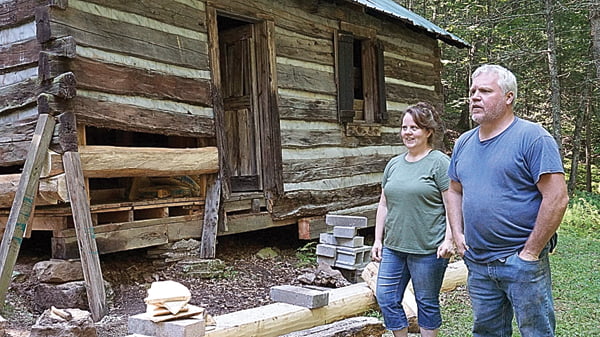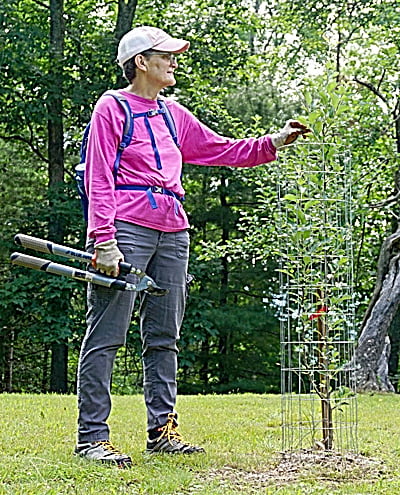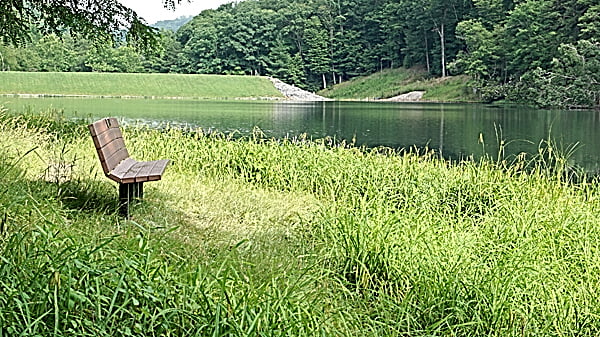
Ken Springer
Watoga Park Foundation
News regarding Delbert’s robotic trail worker project has been trickling in from various friends up in Mudwallow, Ohio, and it may not bode well for the future of Mudwallow State Park Foundation’s fledgling trail maintenance program.
According to the foundation’s treasurer, Max Grey, Delbert had purchased a chainsaw, commercial-grade hedge trimmers and a heavy-duty Sawzall – all battery powered. Max said that Delbert was a little ambiguous about how these tools would be used, saying only that he may have found a solution to his failure in recruiting new trail maintenance volunteers.
Well, Delbert’s creation was unveiled in the predawn hours of July Fourth, or more accurately, his creation unveiled itself by self-starting and cutting its way right through the side of Delbert’s garage and on through the middle of Mrs. Dinkle’s rose garden. With sparks flying and all three tools running simultaneously, the robotic trail worker made a sudden pivot, heading directly for Louise’s vintage 1977 VW Beetle, which was parked in the driveway.
The Frankenstein trail worker climbed right up the back of the Beetle and down the hood heading toward the rear of the Dinkle property, but not before transforming Delbert’s daughter’s treasured hardtop VW into a convertible. Like the Energizer Bunny it “kept going and going,” creating a wide path through old man Goodwin’s cornfield, and would have continued creating miles of new trail if it had not run into the one thing that can stop a Sherman Tank – multiflora rose.
I must admit that I empathize with Delbert’s plight in trying to lure volunteers to the cause of maintaining trails; pleading and begging so often seems futile.
There may very well come a day when technology will be available that can replace flesh and blood trail workers, but as Delbert’s catastrophe has shown us, we are not there yet. So dear reader, I will continue to coax, entice, wheedle and cajole you into joining us up here in Watoga State Park for some old-fashioned trail work. My email address can always be found at the end of this dispatch.
Now, on to things about Watoga and beyond:
The Workman Cabin is being restored and is currently in the capable and uniquely skilled hands of Ethan Burgess, from over on Beaver Creek. Ethan came forward after nearly three years of searching for a qualified contractor and offered to repair the sagging foundation.
He and his sister, Vada, have raised the 132-year-old cabin off the ground, putting in a new concrete foundation that will be concealed from sight by native stonework. Additionally, they have cut and fashioned poplar to match and fit with the original log work. More information will be forthcoming on this project when an entire Watoga Trail Report is devoted to this long-awaited restoration project. Our hats are off to Ethan and Vada, the log-whisperers.

If you have been up on TM Cheek Road lately, you may have noticed seven young trees planted on the left as you approach the overlook. These Grimes Golden saplings are keeping company with the only remaining pioneer apple tree in the meadow. The heirloom apple trees, developed in Brooke County, are there because of the generosity of the Klingelhofer family who has been coming to Watoga State Park for a half-century.
The trees represent the seven children of Mr. Klingelhofer, who was fond of sitting among the apple trees that once dominated the meadow. The old apple trees pre-date the park, and they likely belonged to an early family in the area who lived nearby.
Less than a hundred yards as the crow flies, there is a foundation of a house and a hand-dug well. At one time, the home seconded as a schoolhouse for local children. No doubt those kids were adept at snatching an apple or two as they passed on their way to school.

In addition to the trees, the Klingelhofer family has memorialized their father with the gift of a handsome bench now situated on the shores of Watoga Lake. If you would like to donate a bench as a memorial to a loved one, please contact Watoga State Park at 304-799-4087.
Lastly, a Watoga Trail Report in April about the flavorful and ever-popular morel discussed the outrageous prices commanded by truffles, a subterranean fungus that foodies consider an absolute “must eat” item. It seems the white truffles are in such high demand by people with apparently more money than brains, that a cottage crime industry has developed in Alba, Italy, an area known for their truffles.
Italy’s white truffles are found among the roots of hazelnut and oak trees, and the best and priciest truffles come from the Alba Region. According to an article in The Atlantic, good hunting locations are rarely revealed. Some successful truffle hunters hide the source from their own family members; preferring to reveal their honey-holes to their sons and daughters on their deathbed, as a final gift of sorts.
With an average price tag of up to nearly $7,000 per kilo (approximately 2.2 lbs), consuming this underground mushroom is generally reserved for the wealthy – the ostentatiously wealthy. A famous Japanese writer was reported to have paid $120,000 for two truffles weighing in a bit over two pounds. Not to be outdone a wealthy casino tycoon shelled out $330,000 for two truffles weighing 2.87 pounds – that’s a third of a million dollars, folks.
One would have to ask themselves if there is anything edible, short of ambrosia, that is worth that kind of money. For foodies and the trendy with big wallets, this sounds more like feeding the ego, than feeding the stomach. You may say, “Well, if you got it, flaunt it,” but there is a dark side to this gustatory status symbol.
The Atlantic article reveals nighttime poaching of truffles, leading to the shooting death of a man intruding on another’s favorite truffle hunting area. The Chinese, not to be left out of the action, have flooded the market with counterfeit truffles (Don’t ask me how they do it).
And, even the truffle hunting dogs have not escaped the kerfuffle over the truffle – poachers have been planting strychnine-laced meatballs in favorite hunting areas to eliminate the competition. THAT is about as low as you can go, and all for something that one chef says “smells like a locker room.”
Give me the humble morel any day.
Get in hiking shape; the mushrooms will soon be up,
Ken Springer
Ken49bon@gmail.com



